

Learning in Progress. Adam Watson's Edtech Elixirs: PBL and Eusessments. Mr. Kaegi's Corner - Blog. Resources for Using iPads in Grades K-2. If you are teaching with one, a few, or a class set of iPads, finding the right apps and project ideas for your students can be a challenging task.
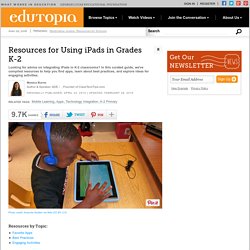
We’ve organized some of the best resources from Edutopia and beyond to help you figure out what tools are best for your early elementary school students. Explore different ways to integrate technology into your instruction! Favorite Apps 7 Apps for Helping Others (Edutopia, 2015) Children can practice empathy through apps that encourage collaboration, whether it’s drawing pictures together, cooking for each other, or creating lessons to share their knowledge. Social-Emotional Apps for Special Ed (Edutopia, 2015) On this list you’ll find nine apps to help special ed students build emotional literacy.
Back to Top Best Practices Common Core in Action: Manipulating Shapes in the Elementary Math Classroom (Edutopia, 2014) In this post you’ll learn how to develop a tech-friendly task that addresses the Common Core State Standards. A New Wonderful Wheel on SAMR and Bloom's Digital Taxonomy. The buzz that the Modern Taxonomy Wheel generated over the last couple of weeks has not yet died out and now we have a new updated wheel from the same guy Allan Carrington.
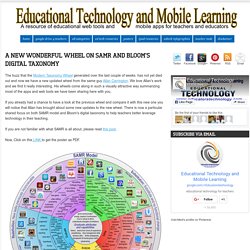
We love Allan's work and we find it really interesting. His wheels come along in such a visually attractive way summarizing most of the apps and web tools we have been sharing here with you. If you already had a chance to have a look at the previous wheel and compare it with this new one you will notice that Allan has brought about some new updates to the new wheel. There is now a particular shared focus on both SAMR model and Bloom's digital taxonomy to help teachers better leverage technology in their teaching. If you are not familiar with what SAMR is all about, please read this post. Now, Click on this LINK to get the poster as PDF. The Digital Scoop. New and innovative ways to better use the iPad in teaching! Teacher Development. States of Matter: Engaging Students With Snow and Science.
States of matter can be a tricky topic to broach with young students.
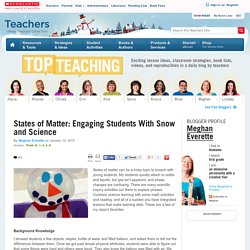
My students quickly attach to solids and liquids, but gas isn’t apparent, and phase changes are confusing. There are many scientific inquiry activities out there to explore phases. Combine science learning with some math activities and reading, and all of a sudden you have integrated lessons that make learning stick. These are a few of my class's favorites: Background Knowledge I showed students a few objects: stapler, bottle of water and filled balloon, and asked them to tell me the differences between them.
States of Matter Snowman After learning what states of matter are, I asked students how we might create a snowman without any snow (which is easy to imagine since we rarely, if ever, have snow here). To assemble the snowman, unwrap the ice balls from the balloons and add salt, which helps the ice stick together. Teacher in a Strange Land. By Nancy Flanagan January 1, 2015 at 5:37 PM Even though a child may indeed be reveling in and absorbing the wonders of a rich travel experience, or a deeply rewarding family visit, back home in the classroom, they're...behind.

And school time is sacred. Top Edu-Bloggers. @coolcatteacher Blog - Teach with better results, lead with a positive impact and live with greater purpose. Video: Watch Richard Byrne (@RMByrne) on @TeacherCast LIVE from #ISTE2014 - TeacherCast.net: Educational Blogs, Podcasts, App Reviews and more. On Saturday June 28, TeacherCast welcomed Free Tech for Teachers founder, Richard Byrne, onto TeacherCast LIVE at ISTE2014.
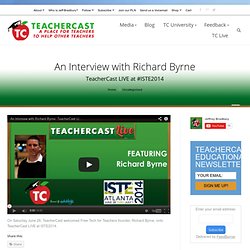
About the author Jeffrey Bradbury, the creator of TeacherCast.net and TeacherCast University is a highly respected educational consultant. He has presented at ISTE (International Society for Technology in Education) as well as other nationally recognized conferences, and was one of the founding organizers of edcampNJ. In 2013 he was honored to be the Keynote speaker at the Pearson Authentic Learning Conference and EdTechNewJersey. Additionally the TeacherCast Educational Broadcasting Network has served educational and medical conventions across the country by providing on site live broadcasting to thousands of educators each week.You can find him on his website www.TeacherCast.net where he writes blogs, creates Audio Podcasts, reviews apps, and provides Screencasts to help teachers learn how to use todays technologies.
Related posts. OER and the Future of Publishing » Edudemic - Education Technology Tips For Students And Teachers. K12 educational transformation through technology. Teaching and Learning News provide by Expert Educational Consultants. In this episode, Alan speaks with Ewan McIntosh, Founder of NoTosh, out of Edinburgh, Scotland.
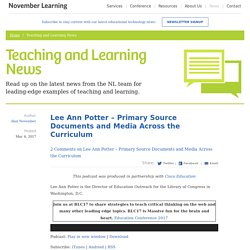
The two begin with a discussion about Ewan’s work with design thinking for developing a new learning ecology within an International Baccalaureate school in Barcelona, Spain. This leads in to a conversation about the emotional process teachers go through in relinquishing some of their established control within the classroom. Finally, they discuss the role of school leaders and the key shifts they must make in order to jump into the design thinking process within their schools. Moving at the Speed of Creativity. Stories of learning and leading. LearningCurve. Flattening Classrooms, Engaging Minds: the Flat Classroom book.
How To Save Time Teaching With Technology. How To Save Time Teaching With Technology Technology is great–when it works.

While using technology for learning is easy, mastering it–using it to save time, reduce busy work, and ultimately increase student understanding–is another matter entirely. The Magic of Learning. Remote Scavenger Hunt We are heading into our third week of social distancing, school closures and “shelter at home&...
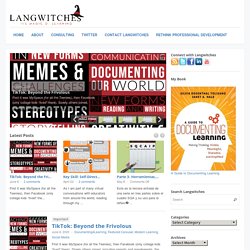
We are in the Midst of... Are you aware that we are in the middle of making history? It is March of 2020. It all started in the library.... Edutech for Teachers. Your School and Google’s Nine Principles of Innovation. The other day Kathy Chin Leong published a review of what Google’s chief social evangelist, Gopi Kallayil, calls Google’s Nine Principles of Innovation.

I tweeted out the post (as did others) and I know many of my followers linked to it. A major section of my upcoming book will discuss how key elements of innovation strategy are particularly effective in a school setting. Much of what I found in my many school visits resonates with this list of what makes Google one of the most innovative cultures on the planet. Here are some very brief examples of how I see Gopi’s keys to Google innovation, as applied to a K-12 setting: My preferred definition of innovation is “ideas that enhance the value of the organization”.
Last month I Tweeted a question: “Who is our customer?” TJ Houston.com. Blog. The Mobile Native. Dan J Gallagher. Hack Education. 2¢ Worth. Listen A few weeks ago I worked and attended North Carolina's ISTE affiliate conference. I opened the NCTIES conference with a breakfast keynote address and Marc Prensky closed it with a luncheon keynote the next day.
Sadly, I missed the second day of the conference. I would first offer some constructive criticism to NCTIES , and to all such ed-tech conferences across the nation and around the world. You do a fabulous job of offering dynamic learning experiences for teachers who are new to teaching or new to utilizing contemporary information and communication technologies in their classrooms. The only idea I can think of is to have one or two session rooms devoted to unconference topics. Now to the surprises It was in the student showcase, a part of most ed-tech conferences that I often miss, using it as an opportunity to visit the exhibitors or dash up to my room for something or other.
“No software. After my hesitation, she continued, “..the game master.” And then, 1 Warlick, David. A practical guide to integrating technology in the classroom. Free Technology for Teachers. The Best iOS Apps for Students and Teachers. iLearn Technology. Edudemic. Education World RSS Feeds. Mark Anderson's Blog - education, learning & technology. Web 2.0 Cool Tools for Schools.